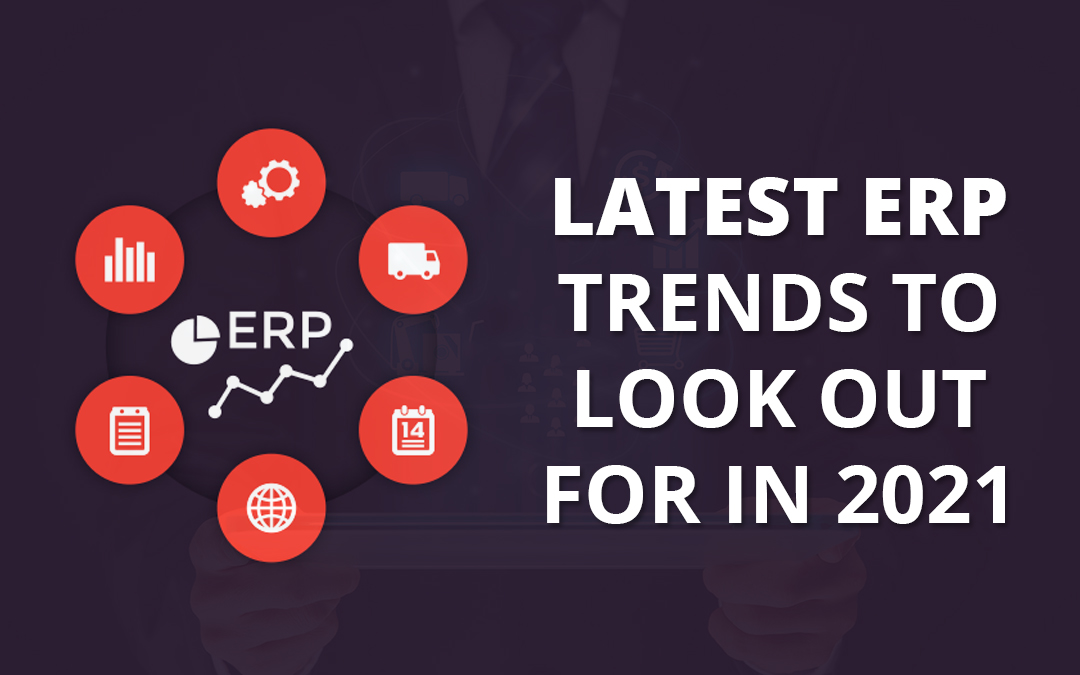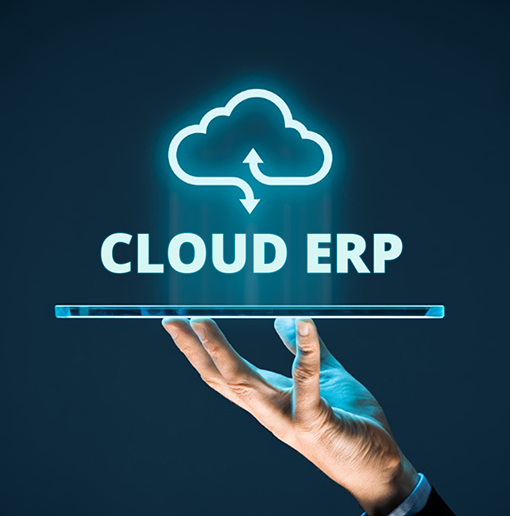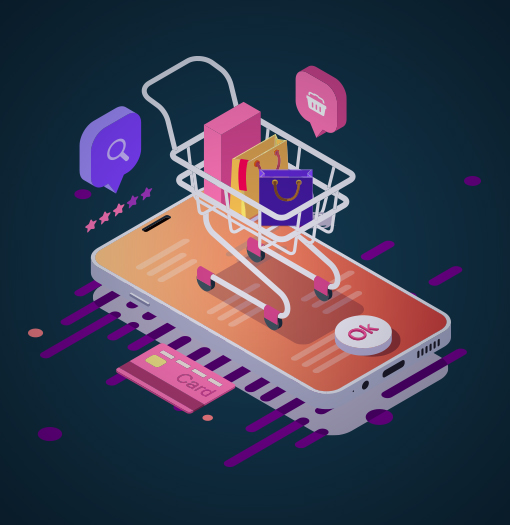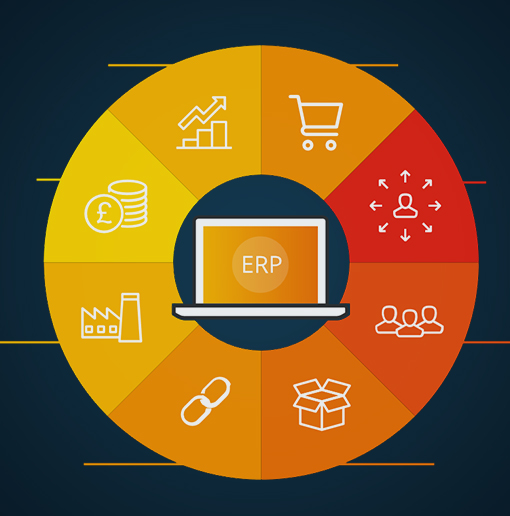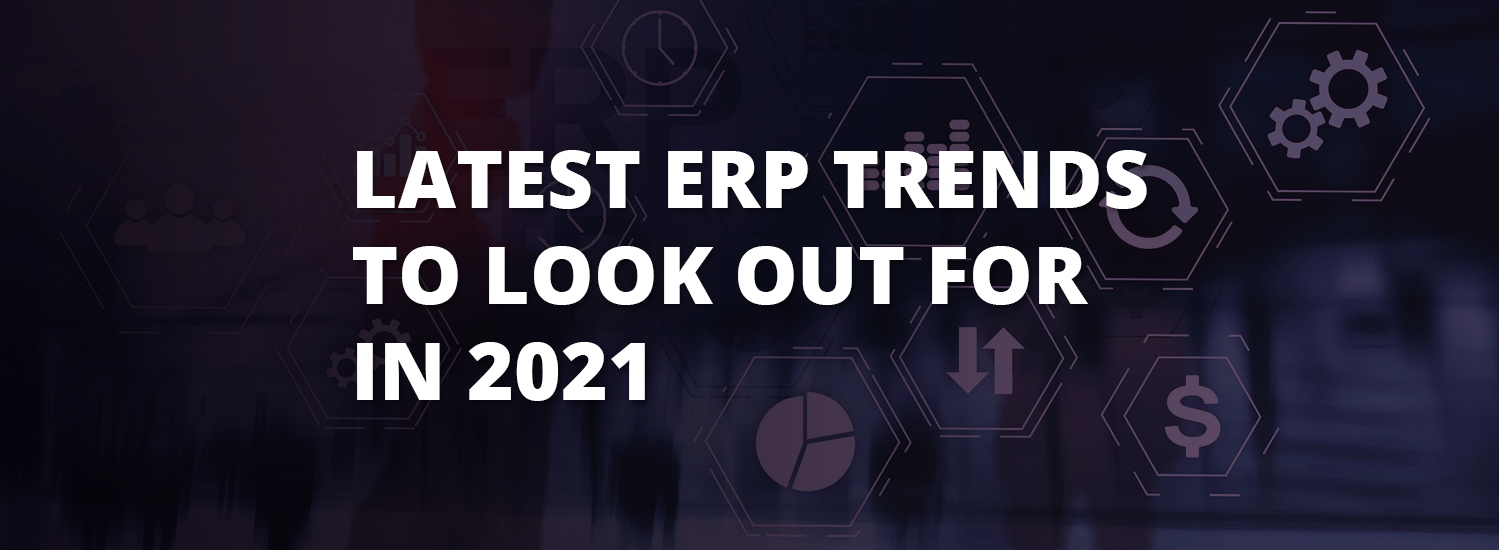
2020 was a rollercoaster ride for organisations globally. Companies had to figure out systems to handle seemingly unending challenges. Remote work, disrupted supply chains, sudden changes in the prices of raw materials, an onslaught of data, and a shortage of labour, to name just a few. Many companies streamlined and optimized their tasks and in these trying times with the help of Enterprise Resource Planning (ERP) systems.
In 2021, we know that ERP will be a gateway to even more flexible and agile systems. These will enable companies to operate with zero downtime, improved resource functionality and overall better process optimization.
Innovation is key to growth, and the current trends are pointing towards organizations being excited about out-of-the-box ERP solutions.
- Modern, cloud-based ERP
- Improved UI/UX
- Integrations with e-commerce
- APIs that make seamless connections
- Agile ERP to support an agile organisation
- Customer-focused ERP
- Powerful analytics
- ERPs aiding business innovation
Modern, cloud-based ERP
With the surge in popularity of cloud computing, more vendors than ever are now offering cloud-hosted options. This makes ERP solutions more accessible to small and medium businesses. With these systems, users no longer have to worry about expensive system maintenance and upgrades. Better still, they can choose which modules they need, and only pay for the ones that they use, giving them more control over their budgets.
Because cloud has been successfully adopted across industries, many online Software as a Service (SaaS) ERP solutions are now dominating the market. Companies that use traditional ERP systems are realising their limitations in terms of inflexibility, costly scaling, lack of innovation and more. These limitations became even more obvious when the pandemic forced many businesses to operate remotely, deeming on-premises solutions and single-device software insufficient, if not totally obsolete. A cloud ERP system enables organisations to seamlessly start their digital transformation journey with real-time data feeds and verifications.
IMPROVED UI/UX
User-centric design depends on regular, meaningful interaction with clients and customers throughout the development process. The more feedback you get, the better your resulting designs will be!
People often confuse User Experience (UX) and User Interface (UI), or presume that they are one and the same. While both UX and UI are critical features that can see your ERP system realising its full potential, you need to understand the differences between the two when choosing the right ERP solution for your organisation.
UI is the collection of tangible elements that allows you to interact with an application or website. Think of the menus, screens, and graphics that you click or tap on your favourite mobile apps, or the customised inbox layout that you use for your work e-mail. UI is related to design and what a website or application looks like.
Unlike UI, UX is not defined by a specific set of visual objects. It’s rather about how you feel when you use a website or app and the experience that you have. In this sense, UX is very subjective — two people might have very different experiences depending on their preferences and behavior.
There’s one key question to consider when thinking about your ERP’s UX. In a world where we spend most of our workday interacting with technology, shouldn’t we at least feel empowered, engaged, and encouraged while we are doing it?
In a recent study, participants ranked the top traditional ERP features from what they found most to least important. The results show that user experience is the most important criteria for users, ahead of ‘fit and functionality’ for the first time.
Integrations with e-commerce
With online retail purchases skyrocketing, e-commerce has become the most popular and most common way of buying goods and services. Even the most reluctant of customers have begun to shop online as a result of lockdowns and restrictions on public gatherings.
This trend will continue far into 2021 and beyond. Every business that has something to sell will have to embrace e-commerce. This makes it essential for retailers’ ERP systems to streamline e-commerce orders, and bring a great experience to their customers, anywhere, any time and on any device.
With a staggering number of sellers in the e-commerce space, and enormous amounts of money at stake, it is only logical that a large percentage of businesses will need to make the move to inventory systems that will manage both their backend stock, and their storefronts. Businesses need to adapt to e-commerce and improve their processes to continuously grow.
APIs that make seamless connections
We continue to become more and more connected in our business world. The pathway between supplier and retail customers needs to be seamless, without forks or hurdles. APIs help this happen by letting information systems talk to each other. 2021 is going to see a huge range of APIs being developed.
An Application Program Interface (API) defines the way software and external programs interact. In ERP solutions, APIs are necessary to ensure that data is accessible between all the programs that you use.
To put it another way, an API is the middleman between an ERP system and a program that needs data. A program will send a ‘request’, and the API will fetch the necessary data from your ERP software. But this only works if your API has the right permissions! It can also control what data programs can request, how often, and in what format.
Open APIs are crucial in creating a ‘community’, where technologies work together. Programs can create their own integrations, encouraging other programs and software to connect and share information, while getting to expand their user base. As a supplier, you get to make use of programs without having to spend any money to develop niche industry software. The concept is borrowed from the idea of open-source software. Create it, open it up to users, then let them run with it.
However, APIs require extensive documentation. Just like any other application released to the public, they need to be developed well, be free of bugs, and be secure.
Agile ERP to support an agile organisation
In an ever-changing industry with new technologies being developed daily, businesses need to be adaptable. To meet demands that change very quickly, they need to adopt a lean and nimble management style. This is known as an ‘agile’ approach or culture.
From a software development point of view, agile culture means using a set of pragmatic values to achieve a lean and nimble project management style. A shift to this methodology has worked for many software projects.
But how can agility be implemented within enterprise applications — especially ERP systems? ERP solutions are a fundamental asset for most large companies, yet ERP transformations remain time-consuming and complex. An agile approach has the potential to dramatically streamline ERP projects. But Information Technology professionals have long believed agility to be incompatible with ERP.
However, many organisations have proven those IT experts wrong by adopting agile practices in a wide variety of situations. They have shown that an agile approach can not only be successful in ERP solutions, but can also see quantifiably better results. They simply need to adapt the methodology to their unique and complex requirements.
We predict that agile methods for ERP implementation will soon be crucial in future-proofing your business. While resistance is understandable, given that agile is relatively new in enterprise applications, the shift towards it is inevitable.
Customer-focused ERP
Consumer expectations have shifted — they want more, and they want it now. The customer is king. And an impatient, savvy one. We are less willing to wait for things. This is true in a large part because of the instant gratification that technology has provided us with globally. We can file our taxes online, compare airline tickets, sneakers or dishwashers, even meet the potential love of our life at the click of a button, and in minutes. What’s more, we’ve become accustomed to the ease of use that we’re getting on our smartphones, tablets, and even our desktops.
The business landscape is changing with digitisation. Companies can now reach their customers directly and get honest reviews about their services and products, thanks to various online platforms. Thus, in the year 2021, ERP will play an essential role in strengthening this connection. It will take digitisation in the right direction by generating alerts, reducing response time, and improving a company’s overall customer satisfaction. If you want to grow in this modern age, then you have to make your businesses customer-centric.
Powerful analytics
Organisations have become more dependent on IT and, as a result, they have accumulated a wealth of data. But most of them aren’t using the information that they get!
As the IoT connects tools and employees to the internet, this data generation is set to grow exponentially. By employing analytical tools, businesses can begin to use data to make accurate predictions that form the basis of a more intelligent approach to business strategy.
ERP systems have always been great tools for collecting and organising data. Not as good, however, when it comes to reporting and analysis. But that’s old news. Modern ERP systems are now natively equipped with powerful data analytics features.
Big data and analytics have paved the way for a new revenue stream for cloud ERP vendors. As companies now prioritise the ability to make data-driven decisions quickly, they seek analytics-based solutions.
According to a recent survey, organisations that take advantage of analytics are twice as likely to rank highly in terms of financial performance. They are five times more likely to make time-sensitive decisions quickly. And they are three times more likely to execute those decisions and plans more effectively.
ERP systems with integrated analytics, ad-hoc reporting, and data visualisation capabilities provide businesses with access to relevant information in real-time. The future of ERP points to an end-to-end tool that can process both structured and unstructured data. This means that another process ERP managers will need to focus on is learning how to leverage big data analytics.
ERP solutions will have access to all data from various departments. This gives them all the information necessary to predict future trends. Plus it makes predictive analysis a strong feature of modern ERP platforms.
ERPs aiding business innovation
Over the next few years, technology like wearables, the IoT and big data analytics stand to reinvent business processes across many different industry sectors. Organisations need to keep an eye on technological advances, even those that may seem to be irrelevant.
Recent developments show that solutions that are, at first glance, designed for consumers are increasingly finding profitable applications within businesses. By taking an innovative approach to the adoption of technology, businesses stand to save time and increase productivity. These results reflect in the bottom-line of enterprises that choose to embrace new technologies.
Once implemented ERP software systems also help streamline operations by enabling automation and reducing the amount of time employees spend on data entry and system management. With more time available, you can focus on innovation instead of repetitive administrative tasks.
Another advantage of ERP solutions is their potential for customisation. Working with a value-added reseller of ERP software can ensure your system has the specific functionality you need. If your business requirements change in the future, you can upgrade your ERP software to match your new demands. This makes investing in ERP an ideal way to prepare for future innovations.
Future-proof your business with TechIntegra ERP
TechIntegra ERP is uniquely positioned to work in a range of different industries. We have very strong industry-specific features that cater to different modes with top-notch technology integrations like Artificial Intelligence, Internet of Things and Business Intelligence. This makes TechIntegra ERP is a future-ready ERP software. We offer high mobility and flexibility allowing businesses to easily scale and make better decisions to keep pace with evolving industry trends.
To stay ahead in the digital era, businesses need to keep up with the trends of cutting-edge software like ERP solutions.
The current and coming years will see further integration of various digital technologies into ERP systems. This will provide a comprehensive solution that benefits both companies and customers.
The future and growth of ERP lies in digitization, agility, and enhanced process optimization features. Companies from various industries will need to upgrade their ERP systems to reap these features’ full benefits in the coming times.
About Author
With over 15 years of ERP solution selling under his belt, his honest approach and fine attention to detail, Syed has helped hundreds of growing businesses find the right ERP software and technology.

